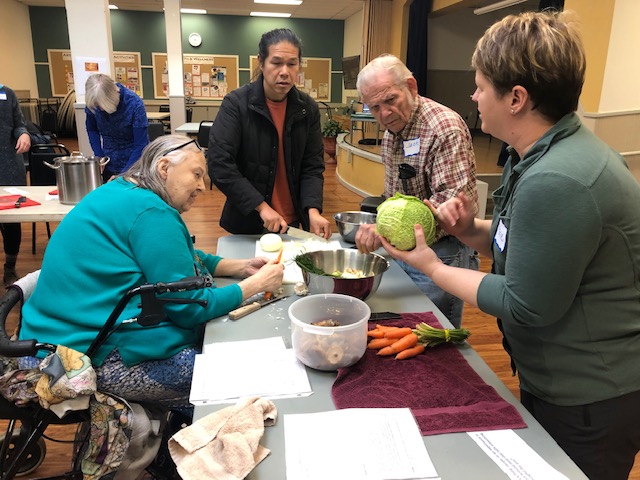A choice of dwellings and the ability to retain independent living are priorities as we age, and affordable, age-friendly housing ranks high on the list. A case study from the U.K. indicated that 76% of the homes were owner-occupied, reaffirming that most retirees would rather live in their own homes than move to a retirement community. This makes sense, as many of these homeowners may have small mortgages or have paid off their mortgages.
For these individuals making the home more accessible is a priority. Handrails, wheelchair ramps, and raised toilet seats are simple additions that can significantly improve life quality.
Initiatives like the Capable program show that seniors’ low-cost options can help them stay healthy in their homes. Designed by Johns Hopkins University and launched last year, the program successfully provided health services to those at home. In addition to providing a 6x return on investment, it reduced depression and increased mobility among older adults.
“Patients set their own functional goals, like safely bathing and getting upstairs, and they subsequently receive home renovations, like installing handrails. Research has shown that the program halved difficulties in function, reduced symptoms of depression, and improved motivation. Participants report 30% fewer difficulties with functional activities.”
Cost Considerations
The financial consequences of COVID-19 hit some families especially hard. Isolation and an inability to pay rent or cover a mortgage can force elders to find affordable housing solutions.
Retirement communities can offer a turnkey solution, especially if the goal is to downsize. Many retirement homes provide health and recreational services in addition to being part of a similar peer group. Portland has taken a holistic approach with housing one of the pillars. The local Hollywood Senior Center has been featured as an example of a good community.

A research paper from Portland State University further highlights the need for affordable housing solutions in the immediate future. Retirement communities often have amenities, including on-site staff, to assist. Many of these facilities are near community services and reliable transportation.
Affordable Housing in Central Oregon
Closer to home, Bend, Oregon, has several similar initiatives in place. The Affordable Housing website is an excellent resource for those looking for a retirement community. The program receives grants to support and build housing developments and provide assistance to older adults in need. The Bend-Redmond Habitat for Humanity was recently awarded the Local Innovation and Fast Track Housing Program Funding Award. The Quince Townhomes in Redmond and the Yeoman Townhomes in Bend will be receiving the funding. Both of these developments are focused on providing affordable housing solutions for seniors.
The COVID-19 pandemic briefly put a hold on affordable housing in the tri-county area. Still, the building activity seems to be back on track. The Bend Bulletin reports that planning permits have gone up, and the city is on track to add 3,000 housing units in 2021. Included in these developments are three affordable housing projects.
The city’s affordable housing manager, Lynne McConnell, states that according to 2016 statistics, approximately 30% to 40% of residents pay over a third of their income for rent. This high cost of living is making economic recovery harder. In speaking to the Bend Bulletin, McConnell stated, “It definitely affects our ability to recover during this craziness.”
Location is Key
Proximity to services is often a concern for the senior population. Semi-retirement or working to put off retirement is becoming more common than ever before. Working from home also makes access to resources more critical than ever. Stocking up on office supplies and groceries can prove to be a challenge when socially distancing.
Being able to visit friends and feel a sense of inclusiveness is also essential when exploring housing options. The need to connect with others should be factored in when deciding on a retirement home/community. The Portland State Institute on Aging is taking this into consideration when planning regulations. Research associate Alan DeLa Torre of the Institute states, “Our approach has been to focus on policy, getting the city’s policy, zoning codes, and department managers to constantly think about our aging population.”
He also reiterates that these policies require a top-down approach. “The strength of a policy-based approach is that it can occur over time, with or without us. Policy change doesn’t necessarily cost any money, and the city’s approval of the plan makes it a formal effort and opportunity to work toward these goals.”
Engaging in daily activities helps keep seniors on a healthier track. No matter where someone calls home, it is essential to help our older adults stay safe, mobile, and connected to the people, services, and support they need in Central Oregon.
Check out our Local Resources page to look into local, age-friendly housing.


